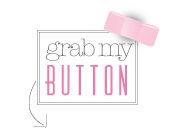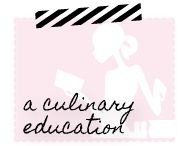Culinary Arts I - Tools and Techniques.
This is a great introductory course to all things culinary and serves as a good foundation for taking subsequent culinary arts courses with George Brown College through their Continuing Education program.
Before I started taking this course I was slightly concerned that it was going to be a little basic, but I knew I had to take it in order to take the rest of the courses this program has to offer. As it turns out, I was wrong. As the course progressed, I learned a wealth valuable information. I believe that even experienced cooks would be hard pressed not to learn something.
For a person starting out, this course provides a great foundation for obtaining an excellent 'toolkit' of kitchen essentials. It's like having a toolkit from the hardware store, except instead of a hammer, the tools are knives and spatulas. Although it seemed like a lot of things to buy at first, there was not one thing from the list of culinary tools which was suggested that I don't use to this day. I went to Williams Sonoma for a lot of the listed required tools, but that's not to say that everyone has to spend a lot of money in order to have quality essentials (...I have a weakness for Williams Sonoma - it always smells so good in that store!).
In the first class there is a really great introduction to knives. Before taking this class I usually just used which ever knife was clean and would cut. In the first few classes, you really cover the characteristics of a good knife, knife safety and how to properly (and safely) sharpen a knife(if you've ever sharpened a knife with a steel, you'll understand how this can go horribly wrong).
The techniques covered in this course was very interesting. By the end of the second class, I knew the difference between Julienne, Julienne Allumette, Batonnet, Brunoise, Small/Medium/Large dice and a Paysanne. (if you are saying 'Huh?' right now, don't worry, I did too).
Things that I thought were interesting which I didn't expect to learn, but I did:
=> The history and structure of an egg, how to properly store them, how they are graded, and how they are used in the cooking process (i.e. As a binding agent, to thicken, etc.).
=> The different cooking processes - pan frying, deep frying, boiling (I was surprised that some students didn't know how to boil pasta), roasting, sautéing, simmering, poaching and the list goes on. I knew how to apply heat in order to cook food, but learning the correct way to do this (and yes, there is a correct way) was a completely different story. I learned that heat can actually be thought of as an ingredient in a recipe, which I never even considered before.
=> How cooking methods and timing differs between different coloured veggies to maximize the nutrients and colour.
I could go on...I really thought this was a great course for learning the basics and developing technique.
Don't get me wrong, I am fully aware that these things could be Googled or learned by watching the Food Network (and on a regular basis, I do a lot of both of those things) but the thing I found the most helpful (and that really made the lessons stick) was that once I watched the professor's demonstration, I was able to apply them during the practice labs which are part of almost every class.
Next up....a review of the recipes. Stay tuned!
Happy Cooking.





















Fine dining restaurants usually pay higher wages compared to other establishments. Other employers that should be considered are hotels, resorts and working for the wealthy who can afford to hire their own private chefs. http://techniciansalary.net/culinary-arts-salary/
ReplyDeleteI'm starting this course this week. Thanks for the post and great detail. ��
ReplyDelete